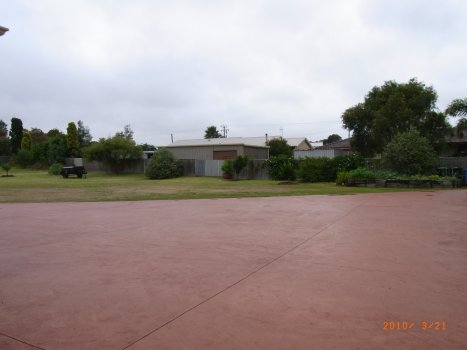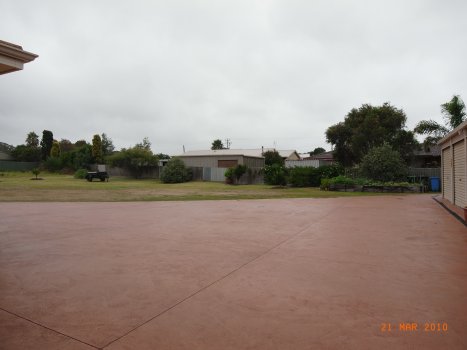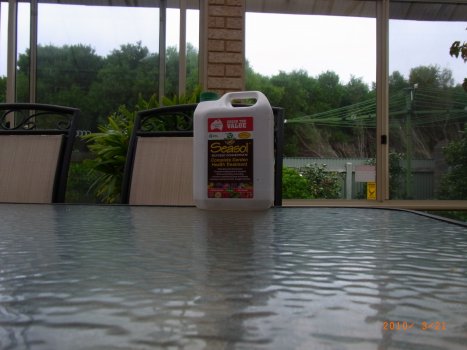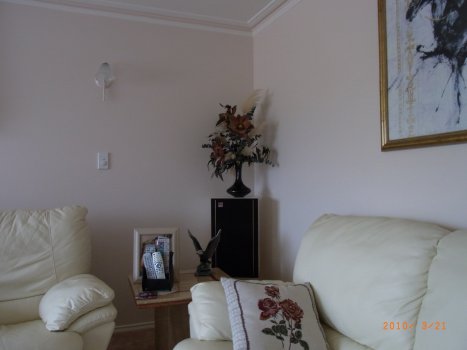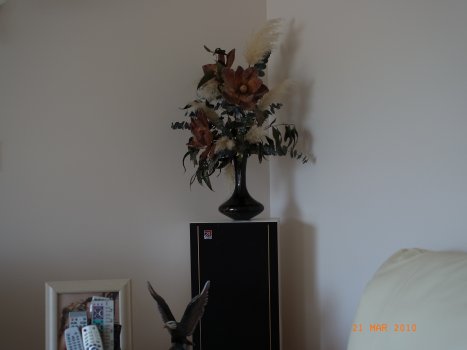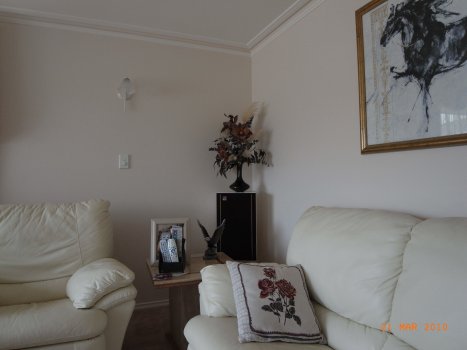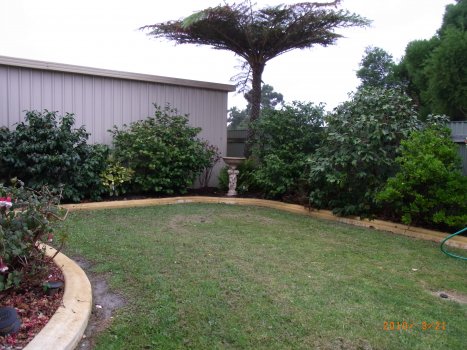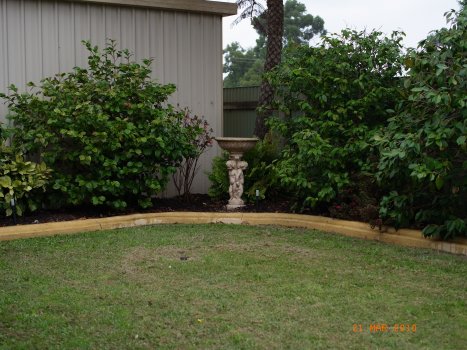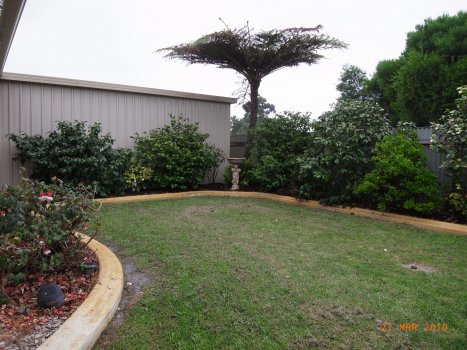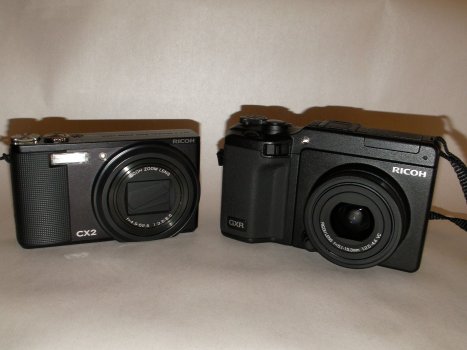
Our original intention was to do two separate co-related reviews on the two Ricoh family cameras, but we have decided that readers will get more value from the two reviews if we intertwine the comparison as we go.
That said, in the CX2 we are comparing what we initially believe to be a very compact, no-frills, point and shoot camera with the GXR, an extremely high end modular semi professional camera that has similar capabilities to a high end SLR.
If you are a professional photographer, then this review is not really for you due to other than looking at the specification comparison the rest of the review would seem to be below your expertise. It was always my intention to review these two cameras from the average person on the street’s perspective. So rather than get bogged down in F stops, apertures etc, we will cover the cameras from an ability to get what you want by setting either camera to “Auto” as we believe that is how the majority of people would use most cameras.
So with both the cameras sent to us by www.Tasco.com.au. in hand let’s take them into the field for comparison.
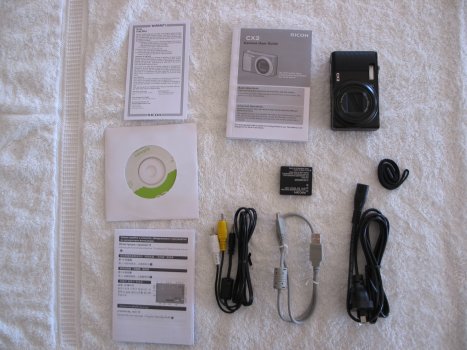
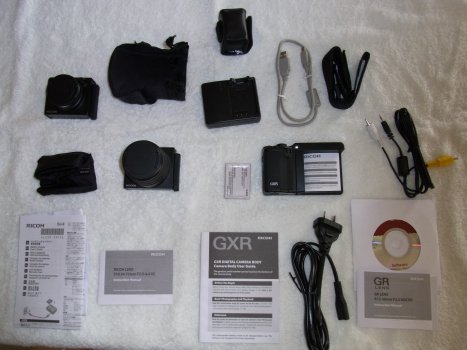 An intro about each of the cameras first though.
An intro about each of the cameras first though.
General Observation
Both of these cameras are produced by Ricoh with the CX2 being well made but of singular construction. The GXR, however, is modular with separately procurable add on bodies and lenses for optimum photographic varied functionality.
It is not an attempt to be critical but it only takes a second to see which is the more expensive camera and it’s really only the feel as the GXR’s body is made of some sort of non slip finish which I must say has stopped me dropping it during testing on the hot sweaty days. Other than the exterior finish, the appearances of both are strikingly similar (not surprising as they are Ricoh brothers). Both are very compact cameras with the GXR looking closer to the rectangular compact shape if you have not attached the add on view finder or the slightly more bulky A12 macro lens.
What I really like is that both of these cameras are so compact that they will both slide nicely into material sunglass pouches and/or your top shirt pocket. To assist you, the actual assessment of size (L x H x D) the CX2 is 10cm x 6cm x 3cm and the GXR is 11.5cm x 7cm x 4.5cm. I need you to bear these measurements in mind as you see just how good these cameras are.
Pick up and shoot – comments
Whilst the switch for “on” varies a little (press button on the CX2 and a slide switch on the GXR), both are easy and pretty failsafe against accidental “on”. We did, however, prefer the slide on the GXR. Something worth mentioning for both, is that the CX2 has no lens cap as it’s lens is automatically protected by a metal shutter. The GXR tells you to remove the lens cap via the LCD screen (brilliant idea). A slight negative for the GXR whilst discussing the lens cap is the fact that the GXR has no attachment strap so it is possible to take it off and then forget it.
Both the CX2 and GXR have done really well and made the LCD screen sizes as big as they possibly could, with both being 4.5cm x 6cm. This is great for persons where their eyesight is not as good as it could be. They both have the same very high resolution of 920K , and it certainly shows, being noticeably sharper and brighter than cameras with standard 230K screens. In fact, the LCD’s on both of these cameras are amongst the best we have ever reviewed. Of some concern was that the screens are unprotected and could be scratched, although this possibility is inherent with most compact cameras.
Both cameras can be set to “auto” capability, which is what we will focus on, but it is worth mentioning that both the Ricoh CX2 and GXR both have a similar menu system and a mode dial where you can use a cascaded structure to make finite adjustment settings from a “Scene” mode and also select and programme individual settings within MY1 and MY2. In both cameras this allows a very quick selection of more appropriate adjustable settings if you feel “Auto” is not quite producing what you want.
The CX2 also has continuous shoot speed from 4fps to an impressively quick 5fps at full resolution shown on the mode dial, whereas the GXR has it deeper within the menu. Although the GXR does have the ability to program another more easily accessible button. I guess this is another indication that the little CX2 is designed as a simple, “no knowledge required”, fast point and shoot camera. It should be noted that the number of shots per second in the GXR is faster with the GR lens A12 macro lens on than with the S10 lens fitted.
We set both cameras to “Auto mode” high “Res” (CX2 @ 9.3 and GXR @ 10 &12.3 Megapixels), set the Focus to “Spot” and Exposure to “Multi” but then stopped as beyond this we felt we would be being too finite and not what the average “Joe Blo” would do.
Paired comparison of important hardware Pros & Cons to note
• The Ricoh CX2 is a super-zoom camera, with a 10.7x, 28-300mm zoom lens and can shoot images that retain detail in both the highlight and shadow areas.
• The Ricoh GXR is a camera with easy change modular components to address specific needs in varied photographic conditions and in doing so allows a finished product even on “auto” to be closer to being professional quality. It does mean, however, that you need to plan in advance what you are going to shoot or carry all the components with you. The 24 -72mm S10 lens unit maintains the low profile when not in use (it collapses when powered down), but the A12 50mm lens can add quite a bit of bulk to the camera when it is fitted.
• Each lens module has the capability of influencing these camera attributes:
Image processing parameters
Menu options – lens units define what menus you see
Noise reduction
Distortion correction
Shutter speed and aperture ranges
Program mode parameters
Specific features (manual focus ring, sensor-shift stabilization etc)
Focus speed
Continuous shooting speed
Buffer (number of frames and speed)
Movie capture capabilities (resolution and frame rate)
• Both the GXR and the CX2 have a “camera shake correction” system to help avoid camera-shake. This is also helped by a novel visual and audible level indicator which assists the taking of level photos in comparison to the horizon.
• The Dynamic Range mode in the Ricoh CX2 works really well, resulting in images that have noticeably more dynamic range that those shot in the Normal mode and therefore produce photos that are better than most other compact cameras.
• The GXR’s ability to fit a more appropriate lens to suit the needs of the occasion once again sees it excel in this area and also puts it in front of the CX2.
• With both cameras it’s easy to review recorded photos with a single and same button press and delete them singularly, collective or all, in an easy similar fashion.
• The GXR has a programmable rocker type switch that not only performs some individual functions but is fully programmable. This allows the user to set up the camera so that specific settings can be assigned and very easily accessed so that not only does the camera become a professional quality point and shoot on “Auto” but it then really has additional Auto levels for fast point and shoot.
• If desired in programme mode, the GXR also has a front roller control to adjust apertures and shutter speeds and then via this roller whatever you adjust, the camera’s intelligence will automatically adjust the other to cleverly ensure that the exposure remains the same.
• By pressing a button called “direct” on the GXR, you can immediately see everything about the photo being taken and what is set. In fact, it can show up to 38 pieces of information on the screen to show you exactly what is happening. This function is not available to the same extent in the CX2.
• The CX2 records in jpeg, whilst the raw photos in the GXR are DNG files which is an open format supported by a lot of easily and widely distributed procurable software which will read these files. With most other cameras, raw photos are files with a proprietary format and are therefore difficult to find supportive software other than from the licensees.
• Wide screen aspect 16.9 available with GXR but not on the CX2.
• To change lenses in the GRX, is certainly no drama as it takes approx 2-3 seconds a change.
SPECIFICATIONS
| Description | CX2 | GXR S10 lens | GXR A12 lens |
| Format | Compact | Interchangeable lens camera | Interchangeable lens camera |
| Max resolution | 3456 x 2592 | 3648 x 2736 | 4288 x 2848 |
| Low resolution | 3456 x 2304, 3072 x 2304, 2592 x 2592, 2592 x 1944, 2048 x 1536, 1728 x 1296, 1280 x 960, 640 x 480 | 3648 x 2432, 3648 x 2176, 3648 x 2048, 3264 x 2448, 3264 x 2176, 3264 x 1840, 2736 x 2736, 2448 x 2448, 2592 x 1944, 2048 x 1536, 1280 x 960, 640 x 480 | 4288 x 2416, 3776 x 2832, 3456 x 1944, 3072 x 2304, 2848 x 2848, 2592 x 1944, 2304 x 2304, 2048 x 1536, 1280 x 960, 640 x 480 |
| Image ratio w:h | 4:3, 3:2, 1:1 | 16:9, 4:3, 3:2, 1:1 | 16:9, 4:3, 3:2, 1:1 |
| Effective pixels | 9.3 million | 10.0 million | 12.3 million |
| Sensor photo detectors | 10.3 million | 10.3 million | 12.9 million |
| Sensor size | 1/2.3 ” (6.16 x 4.62 mm, 0.28 cm²) | 1/1.7 ” (7.60 x 5.70 mm, 0.43 cm²) | 23.6 x 15.7 mm (3.7 cm²) |
| Pixel density | 33 MP/cm² | 23 MP/cm² | 3.3 MP/cm² |
| Sensor type | CMOS | CCD | CMOS |
| ISO rating | Auto, Auto HI, 80, 100, 200, 400, 800, 1600 | Auto, Auto-Hi, 100, 200, 400, 800,1600, 3200 | Auto, Auto-Hi, 200, 400, 800,1600, 3200 |
| Zoom wide (W) | 28 mm | 24 mm | 50 mm |
| Zoom tele (T) | 300 mm (10.7 x) | 72 mm (3 x) | 50 mm |
| Digital zoom | Yes, 4.8x | Yes, 4x | Yes, 4x |
| Image stabilization | Yes, Sensor shift | Yes, Sensor-shift | Unknown |
| Auto Focus | Multi-point TTL autofocus | Contrast detect AF | Contrast detect AF |
| Maunal Focus | Yes | Yes | Yes |
| Normal focus range | 30 cm | 30 cm | 30 cm |
| Macro focus range | 1 cm | 1 cm | 1 cm |
| White balance overide | 5 positions plus manual | 5 position plus manual | 5 position plus manual |
| Aperture range | F3.5 – F5.6 | F2.5 – F4.4 | F2.5 |
| Min shutter | 8 sec | 180 sec | 180 sec |
| Max shutter | 1/2000 sec | 1/2000 sec | 1/3200 sec |
| Built in flash | Yes | Yes, pop-up | Yes, pop-up |
| Flash range | 3 m (ISO 400) | 4.5 m | 3 m |
| External flash | No | Yes, hot-shoe | Yes, hot-shoe |
| Flash modes | Auto, On, Off, Red-Eye reduction, Slow Sync | Auto, On, Off, Auto red-eye, Slow Sync, Manual | Auto, On, Off, Auto red-eye, Slow Sync, Manual |
| Exposure compensation | -2 to +2 EV in 1/3 EV Steps | -4 to +4 EV in 1/3 or 1/2 EV steps | -4 to +4 EV in 1/3 or 1/2 EV steps |
| Metering | Multi light metering (256 segments) , Multi, Center weighted, Spot | Multi, Center, Spot | Multi, Center, Spot |
| Aperture priority | No | Yes | Yes |
| Shutter priority | No | Yes | Yes |
| Lens thread | Yes, adapter | Yes, adapter | |
| Continuous drive | Yes | Yes | Yes |
| Movie clips | Yes, 640 x 480, 30 fps, 320 x 240, 30 fps | Yes, 640 x 480, 320 x 240 @ 30 fps | Yes, 1280 x 720, 640 x 480, 320 x 240 @ 24 fps |
| Remote control | No | Yes | Yes |
| Self timer | Yes, 2, 10 or Custom | Yes, 2 or 10 sec, 10 sec (3 images) | Yes, 2 or 10 sec, 10 sec (3 images) |
| Timelapse recording | Yes | Yes | Yes |
| Orientation sensor | Yes | Yes | Yes |
| Storage types | SD/SDHC card, Internal | SD/SDHC, Internal | SD/SDHC, Internal |
| Storage included | 88 MB Internal | 86 MB Internal | 86 MB Internal |
| Uncompressed format | No | Yes, RAW (DNG) | Yes, RAW (DNG) |
| Quality levels | Fine, Normal | Normal, Fine | Normal, Fine |
| Viewfinder | None | Yes | Yes |
| LCD | 3 “ | 3 “ | 3 “ |
| LCD dots | 920,000 | 920,000 | 920,000 |
| Live view | No | No | No |
| USB | USB 2.0 (480Mbit/sec) | USB 2.0 (480Mbit/sec) | USB 2.0 (480Mbit/sec) |
| HDMI | No | Yes | Yes |
| Battery | Lithium-Ion (DB-70) & charger | Lithium-Ion rechargeable DB-90 | Lithium-Ion rechargeable DB-90 |
| Weight (incl batteries) | 185 g (6.5 oz) | 355 g (12.5 oz) | 453 g (16 oz) |
| Dimensions | 102 x 58 x 29 mm (4 x 2.3 x 1.1 in) | 114 x 70 x 44 mm (4.5 x 2.8 x 1.7 in) | 114 x 70 x 77 mm (4.5 x 2.8 x 3 in) |
Photo shots
We have taken a number of photographs of “the same scene at the same time”, first with the Ricoh CX2 then with the GXR having the S10 24-72mm F2.5 – 4.4VC lens fitted and then still with the GXR but with the GR Lens A12 50mm F2.5 Macro lens.
We took the shots of:
• Inside, low light no flash
• Outside, dull day
• At a distance
• Clarity to read
All cameras were set with the previous settings mentioned – Auto, No flash, Spot focus and Exposure set to Multi.
|
|
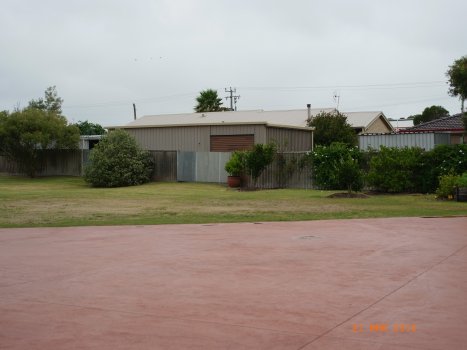 |
|
|
|
|
|
|
|
|
|
|
|
|
|
In Summary
• Well we can start off by saying that with either of these cameras on Auto, we can produce excellent photos, they are a breeze to set and have very similar easy to follow menu systems.
• The viewing of recorded pictures is a simple “one button press” and the LCD screens are excellent to view and the same size in the CX2 as it is in the GXR.
• You are able to delve into the settings on either of these cameras to achieve better quality in the photos, but to a lesser degree in the CX2 if you are to keep the camera essentially on Auto.
• The GXR on the other hand, not withstanding that you can also change lens and get a further expansion of settings, has far more programmable and controllable features and can STILL keep the camera set to Auto.
• With both cameras set to the most simplistic and basic “Auto “ setting, we were hard pressed to make a firm decision on which was the better camera. But if forced, we would say that the GXR with the S10 lens is only marginally better than the CX2. However, it is a lot better than the CX2 as soon as you start using another lens, such as the A12 for varied conditions (but then this does make the camera more bulky and it will no longer have the benefit that the CX2 has of being as compact).
• As far as the feel of the camera goes, we perceived the GXR to be on top.
• The range of what you can do with photos is by far greater in the GXR (i.e. widescreen shots, raw format).
• Because of its modular construction, the GXR should be able to stay current by just adding lenses as they are improved etc and the main body would remain with you, although at some later stage the body also may become dated and obsolete.
• Neither camera, when compared against the Sanyo Camcorder Xacti, came out on top in Movie mode but then again, the Sanyo Camcorder Xacti was third in quality each time when taking the still photographs.
Conclusion
The market for GXR camera is for people who don’t want the bulk of an SLR, but who want the additional option outside of “Auto” to have additional control over raw photos. As you learn more with familiarity, you can program the GXR and it would become a “point and shoot” camera with far more ability than the CX2 and it would most certainly equal the potential of most high end SLR’s.
If you wish to become semi professional or professional in taking quality photos, then the GXR is the one to get as it would be quite some time (if at all) before you acquired sufficient knowledge to surpass the capability of the camera. Unfortunately, the GXR does carry a bit more of a price tag so you need it to stay current with future compatible add ons which would then enable the retention of the camera for quite some time. (Full kit @ Aud $2099)
Of the scenes we took (shown here), we selected the GXR with the A12 lens as producing the best Pics no matter what, although we felt that with the S10 lens it was still marginally better than the CX2.
We gave it the “thumbs up”!
The market for the CX2 is clearly for the person who wants exceptional value for money and a very competent point and shoot camera. It is very friendly to use and easy to operate and it became our favourite to throw into the car or top pocket. At the low price of Aud $399 it becomes good value.
Do you take advantage of on going improvements in cameras and just replace the CX2 after a couple of years? I’ll leave that decision to you!
It certainly is “value for money”.


